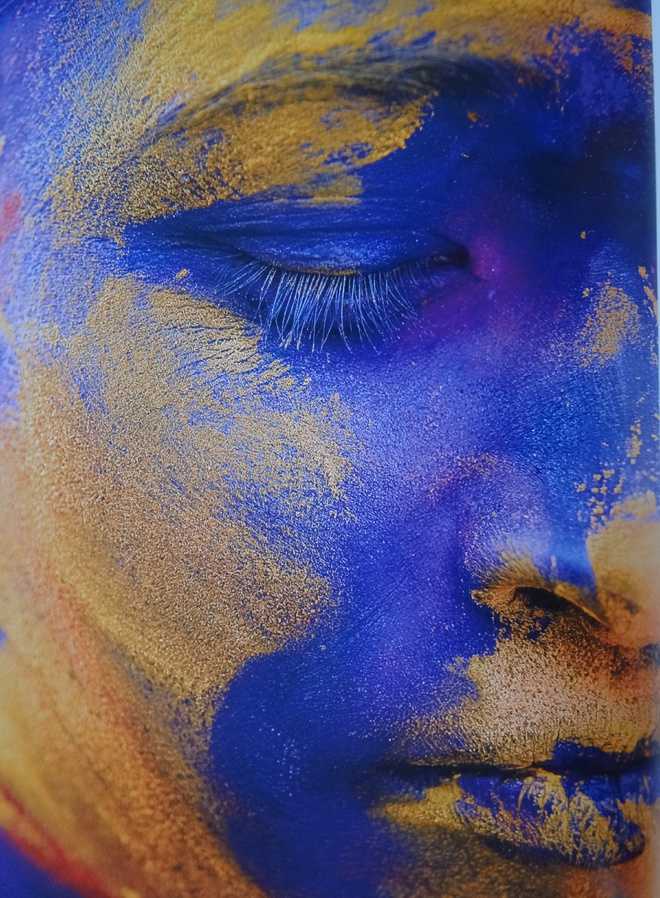B.N.Goswamy
Here, veiled, pass heart-expanding women with chaplets of flowers and comely boys with languid gait. Here are bejewelled elephants and haughty eunuchs, there frolic charioteers and colour-smeared lambs. Here are pannikins of crushed pearls, trays heavy with sweetmeats, the mouth-rejoicing gulabjamuns…; the love philters, a thousand roses distilled in a vial; here again are gossamer bodices, chikan-worked, of which a courtesan may put on twelve and still not be modestly clad.
— Allan Sealy, Trotter Nama
The light here is like no other place on earth, filtered by the dust of millions on the move, on fire with a sun that seems suspended in time and place. I love to wake before dawn and walk down to the ghats and watch the day, and the people, and India, come alive as the sun rakes across the Ganges. As a photographer, I am drawn to India because of the psychedelic colours that seem to permeate every facet of life. I go there for all the contradictions of a place that is like no other I have been to…
— Eric Meola, India in Word & Image
I recall, long years ago, a friend and a colleague of mine from Berkeley, came visiting and, before leaving, she asked me if I could take her to some place where she could buy some glass bangles. I did take her shopping: not to some fancy store but one of those chowks where rehri-carts jostle each other, selling all kind of wares, among them of course glass-bangles. I had no idea of what kind of bangles she was looking for, and how many. But, once there in this bangle-heaven, she stationed herself in front of a cart filled to the brim with bangles; eyes alight with excitement, she stood there staring: bangles without number, of different hues, arranged on rods, tier upon tier, shining in the sun. She was the one to be making her own choices, but I could not help seeing her eyes jump from one series to land on to the next, and then back again, or further. Clearly, she was having problems making up her mind. And while she stood there, a young girl, barely ten years of age, came running from nowhere, stopped at the same cart, looked at the range and began ordering: asking the vendor to take down six of those, from the jamuni-violet stack, six from the totiya-green one, another four from the chilli-red, and yet another four from the turmeric-yellow. Or something like that. Taking those down, the vendor arranged them all on a wooden rod for the girl to see; quickly she nodded, approving of her own choice; paid and left. My friend kept looking at all this in wide-eyed wonder, for the combination that the girl had got together, in an instant as it were, was truly astonishing. ‘You here have a real eye for colour,’ my friend said. And then began toiling to make her own choices.
It set me thinking, my friend’s remark. Do we in our land really have a special feel, an eye, for colour? One thing was certain. Nearly every foreigner who comes here assuredly thinks so. Eric Meola, the distinguished American photographer who put together the book from which I have cited above — India in Word & Image — seems to have got completely drenched in colour while in India. Image after image in his book explodes with colour, as it were: not simply the colours of Holi or some ritual observances, but everyday life: women walking in the fields, ceilings saturated in patterns of colour, shimmering palace walls, saris by the mile drying on sandy banks, heads of elephants painted to look like tigers with their beady eyes peeping through layers of pigments. It is a riot. What enriches Meola’s work further is his attempt to touch, somewhere, the soul of India. This he does by strewing over the pages very sensitively chosen passages from great and famous writers, mostly Indian — Rabindranath Tagore, Salman Rushdie, Anita Desai, R.K. Narayan, Vikram Seth, Arundhati Roy, Jhumpa Lahiri, Gita Mehta, Kamala Markandeya, Kiran Desai, among them — that have a special feel of the spirit of our land. It works quite beautifully.
A question, at the end, for ourselves? Do we see the colour in our land the same way as outsiders do? Or, have we, being enveloped in it, and taking it for granted, stopped seeing it? A poet raised the point in his own fashion: Rang kaa umadaa huaa sailaab hai harsoo magar/rooh key andhey musavvir ko kahaan pehchaan hai? [A flood of colour rages all around us; but does the eyeless soul see it?]
Unlock Exclusive Insights with The Tribune Premium
Take your experience further with Premium access.
Thought-provoking Opinions, Expert Analysis, In-depth Insights and other Member Only Benefits
Already a Member? Sign In Now










